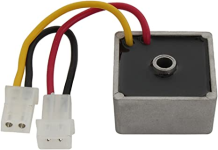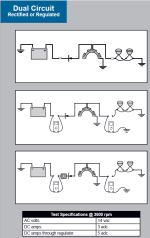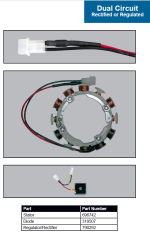- Joined
- Feb 19, 2020
- Threads
- 120
- Messages
- 12,865
It so simple to do with the right parts. Even a brain dead DIYer can to it.
Briggs produces a voltage regulator for this conversion where it basically plug and play other than adding a ground wire.

PN 790292. Aftermarket version is about $30 on Amazon from DB electrical. It convert the 3 amp max output to a 5 amp max system but the OP still need to verify that the diode and stator are still good. No current wires will need to hatched and jury rigged.
Now the voltage regulator is the 794360 which available in after market for around $15 if you what to do a hatchet job. It is the OP choice to use the correct part or risk screwing up. Yes the correct is twice the money but you don't anything other the screw and ground lead plus it is professionally done.
Now I can use the 794360 here but it is because I have the correct terminals and housing on hand to make it the 790292 version. Plus I have the proper crimping tool.
Briggs produces a voltage regulator for this conversion where it basically plug and play other than adding a ground wire.

PN 790292. Aftermarket version is about $30 on Amazon from DB electrical. It convert the 3 amp max output to a 5 amp max system but the OP still need to verify that the diode and stator are still good. No current wires will need to hatched and jury rigged.
Now the voltage regulator is the 794360 which available in after market for around $15 if you what to do a hatchet job. It is the OP choice to use the correct part or risk screwing up. Yes the correct is twice the money but you don't anything other the screw and ground lead plus it is professionally done.
Now I can use the 794360 here but it is because I have the correct terminals and housing on hand to make it the 790292 version. Plus I have the proper crimping tool.
Last edited:


